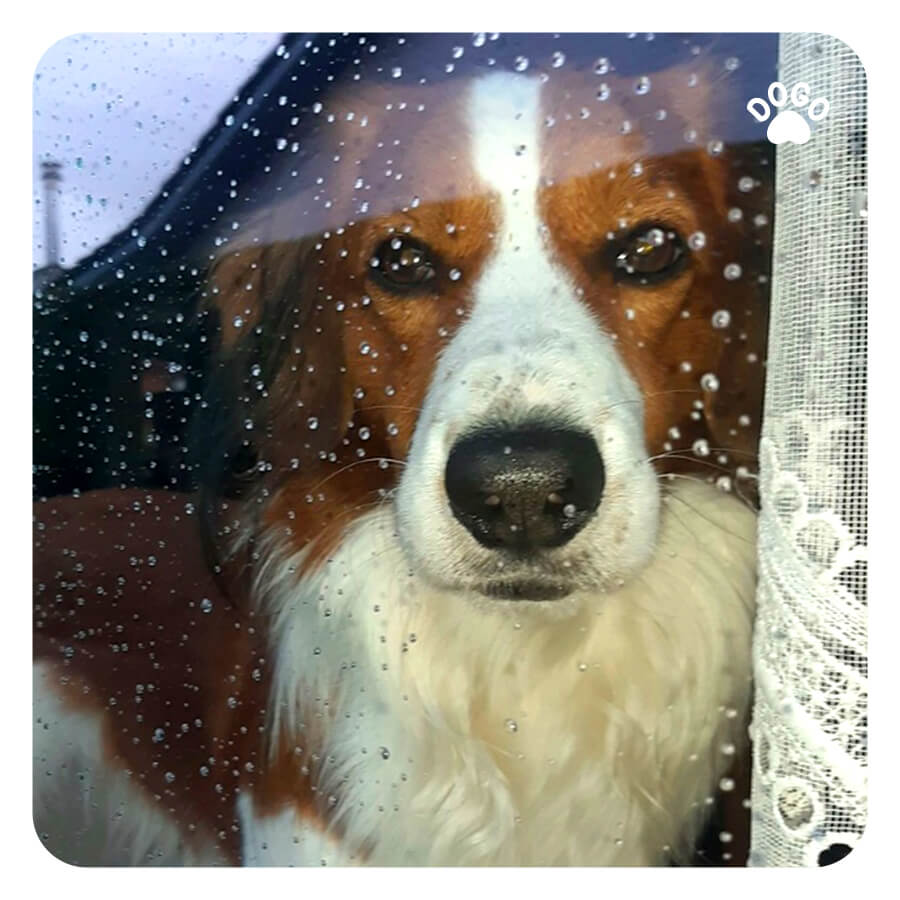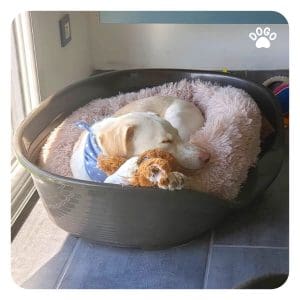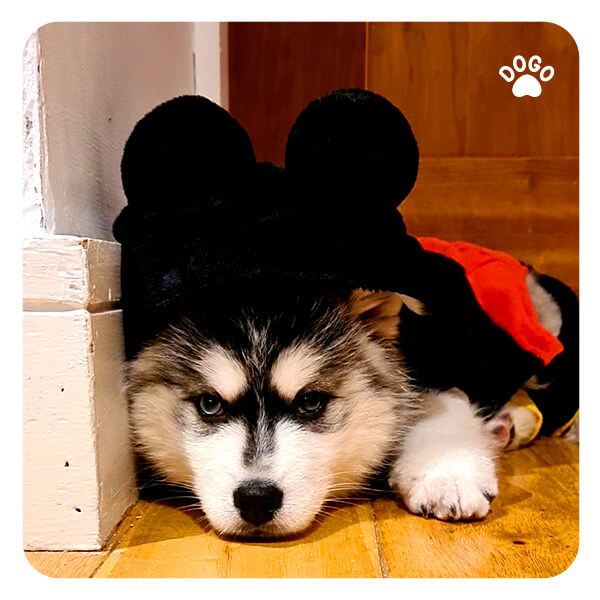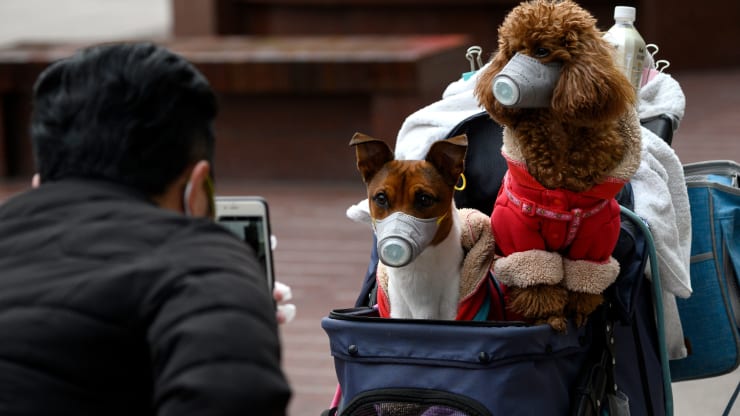Back to Work? Prevent Your Dog from Separation Anxiety
Post Date:
July 18, 2024
(Date Last Modified: October 9, 2024)
After months of self-isolation due to the COVID-19 pandemic, life is slowly getting back to normal. Restrictions preventing the spread of coronavirus gradually loosen and with taking necessary measures, more and more people are allowed to get back to work.
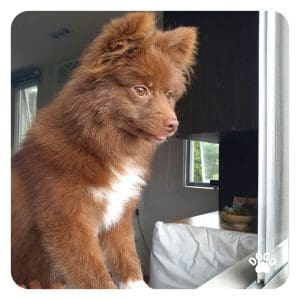 By now, the majority of dogs got used to having their humans at home 24/7. Therefore before resuming your daily routine, it is extremely important to prepare your pup for this change. Otherwise, your furry friend might get very confused and have difficulties coping with the new situation. Unexpectedly being left alone at home for many hours, can even lead to behavioural issues. How to prevent your dog from separation anxiety while coming back to your regular work schedule?
By now, the majority of dogs got used to having their humans at home 24/7. Therefore before resuming your daily routine, it is extremely important to prepare your pup for this change. Otherwise, your furry friend might get very confused and have difficulties coping with the new situation. Unexpectedly being left alone at home for many hours, can even lead to behavioural issues. How to prevent your dog from separation anxiety while coming back to your regular work schedule?
Get back to your pre-coronavirus routine
If you’re still not sure when your return to work will be possible, it’s a perfect time to gradually get back to your usual schedule to prevent your dog from separation anxiety. Even though it certainly is a wonderful feeling to finally be able to dedicate more time to your pooch than usual – to bond, play and train together, for the sake of their health, you should start getting back to your normal routine.
- Reduce the time & attention you offer them these days – spend with them the same amount of time as before COVID-19 so they won’t notice a huge difference in your behaviour.
- Take a walk without your dog – leave them at home for some time, let them learn how to be alone again.
- When you leave or you arrive home, don’t make a big deal about it – no overly emotional goodbyes and welcomes. Act as it is a usual part of your day, nothing special and certainly nothing to celebrate. This way your dog will learn that it’s just a part of your daily routine.
Create alone time for your dog
‘’Creating alone time for your dog or new puppy is extremely necessary for them to be able to learn the skill of self-soothing. It is not innate, and right now, having you near them doesn’t allow them to look to themselves to calm themselves down. They are able to rely on you when they feel uneasy, stressed, or bored. This might come out in numerous nuisance behaviors such as excessive barking, attention-seeking behaviors such as jumping up, excessive licking, excessive mouthing stealing forbidden objects to get you to engage and not enough sleep.’’
– says Sylvia Wes, an ABCDT certified trainer and behavior specialist at Up Dog based in Los Angeles and also Dogo trainer.
How to create safe alone time for your dog?
 Sylvia shared her tips on how to provide fun and valuable alone time for your pup:
Sylvia shared her tips on how to provide fun and valuable alone time for your pup:
- Crate train them
Giving your dog a space to call their own can allow you to create space away from you even while you are still there. It is essential to make sure the crate is a positive and comfortable space for your dog. To create a positive association with the crate, it is recommended to provide your dog with treats and toys while they are inside. Additionally, it is important to never force your dog into the crate and to always leave the door open so they can come and go as they please. Read here how to crate train your dog.
- Find a sitter or a dog trainer who offers daycare/ socialization programs
This is especially important if you have a puppy under 6 months. They desperately NEED to be socialized otherwise they will develop unhealthy fears to everyday normal people, places, and things. Take your dog to a new setting where they can interact with someone new in someplace new.
- Have a date night!
Are local restaurants open for takeout in your city? Take a drive over to one, pick up your food, and bring your iPad or laptop. Eat in your car while you enjoy a movie on your iPad. This will create 2-3 hours of the time your dog will be without you in the house.
- Provide them with licking toys
Licking is a dog’s natural way of soothing themselves. Lickimats, frozen kongs, or stuffed hooves make great “lickables” for your dog to enjoy while they are alone and attempting to soothe themselves.
- Keep them engaged and feeling cozy
One effective way to prevent separation anxiety in dogs is to keep them engaged and stimulated throughout the day. You can do this by providing them with interactive toys, such as puzzle feeders, to keep them occupied when you’re not around. Additionally, you can leave the TV or radio on to create a comforting atmosphere and make your dog feel less lonely. Additionally, providing your dog with a cozy and comfortable bed can help them feel safe and secure when you’re not around.
Stay consistent
Let’s be honest – fighting the willingness to pet your dog and play with them might be hard for us as well. But remember:
‘’Your dog needs to build their confidence in order to feel better away from you. Time spent alone or in the care of others allows your dog to explore their personality and build a relationship with themselves. It’s just as important for them as it is for us.’’
Only we can help our dogs to adapt to the upcoming changes and it is our responsibility to keep their mental wellbeing in shape. So stay consistent in your approach and think of positive long-term results. You will thank yourself in the future.

